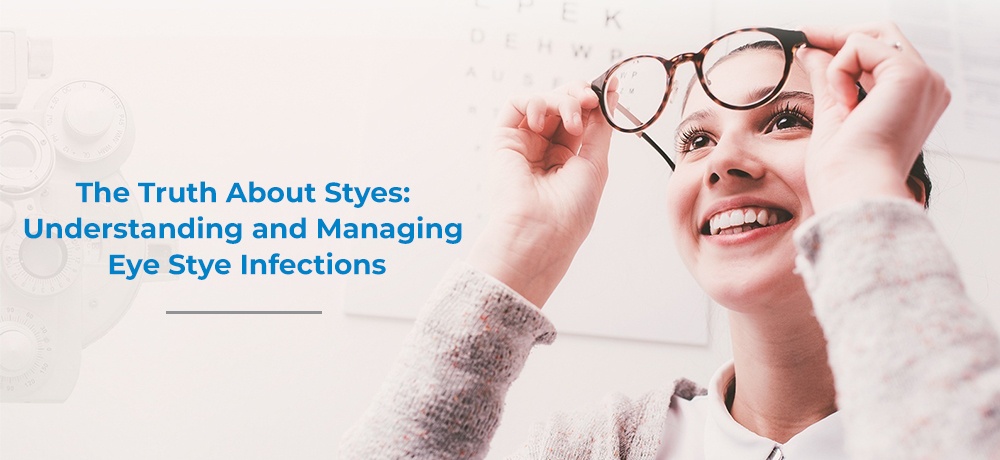The Truth About Styes: Understanding and Managing Eye Stye Infections

Have you ever experienced a small bump or redness on the edge of your eyelid? If so, you may have encountered a stye, also known as an external hordeolum. Styes can be uncomfortable and cause pain, but with the right treatment, they can be managed effectively. In this blog, we will delve into the world of styes, exploring what they are, how to deal with them, and when to seek professional assistance. At Doctors Eyecare Wetaskiwin, we are dedicated to providing exceptional eye and vision care services. We understand the discomfort styes can bring, and we’re here to guide you through the process of managing and treating them.
1. Understanding Styes:
A stye is a small area of redness and pain or a bump that appears on the margin of your eyelid. This condition occurs when a gland at the edge of the lid becomes blocked and subsequently infected by bacteria, most commonly Staphylococcus aureus. Styes can develop on either the upper or lower eyelid and may cause discomfort, tenderness, and swelling.
2. Identifying Stye Symptoms:
To determine whether you have a stye, look out for the following symptoms:
- Redness and swelling around the affected area
- Tenderness and pain when touching the bump
- Sensitivity to light
- Blurred vision (in rare cases)
3. Treating Styes:
Fortunately, styes can be effectively managed and treated with a few simple steps. Here’s what you can do:
- Warm Compresses: Applying warm compresses to the affected area for 15 minutes, 3-4 times a day, can help promote the healing process. The warmth encourages the stye to come to a head, which allows for the expression of its contents.
- Antibiotic Ointment: Depending on the severity of the stye, your Doctor of Optometry may prescribe antibiotic ointment. This ointment helps combat the bacterial infection and aids in the healing process. It’s essential to follow your optometrist’s instructions and continue using the ointment until the symptoms have cleared.
- Gentle Cleansing: Once the stye has come to a head, it can be gently expressed by applying gentle pressure to empty its contents. After expressing the stye, it’s important to clean the eyelids gently to prevent further infection. Your optometrist can guide you on proper cleansing techniques.
- Lancing: In cases where the stye is large or located under the lid (known as an internal hordeolum), it may be necessary to perform a minor procedure called lancing. Lancing helps facilitate the expression of the mucous and aids in the healing process.
4. When to Seek Professional Assistance:
While most styes can be managed at home, there are instances when it’s crucial to consult a healthcare professional, such as an optometrist. Seek professional assistance if:
- The stye worsens or doesn’t improve after a few days of home treatment
- The redness and swelling extend beyond the eyelid
- Your vision becomes affected or blurry
- The stye causes severe pain or discomfort
Styes may be common, but they don’t have to disrupt your daily life. By understanding their causes, recognizing the symptoms, and following the appropriate treatment steps, you can effectively manage and alleviate the discomfort caused by styes. Remember, if you require professional guidance or have any concerns, our friendly and knowledgeable team at Doctors Eyecare Wetaskiwin is here to help. We offer comprehensive eye care services, including treatment for styes and other eye-related conditions.
To learn more about the services we provide, please click here. If you’d like to schedule an appointment or have any questions, please feel free to call us at (780) 361-2020 or email reception@wetaskiwineyecare.com.